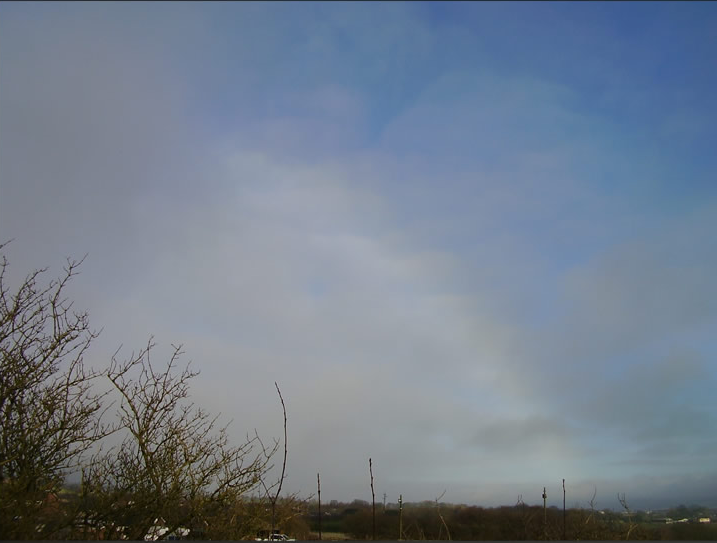Subtleties in the Light
Subtleties in the Light: Unveiling the Hidden Wonders of Atmospheric Optics
Atmospheric optics is a fascinating field that goes beyond the dazzling displays of light and color that we often associate with it. While those vibrant spectacles certainly captivate our attention, there is a whole world of subtle sky effects that are equally intriguing, if not more so. These hidden wonders present a greater challenge to observe, making the experience all the more rewarding.
One such ethereal phenomenon is the delicate cloudbow, a subtle cousin of the rainbow. Often overlooked, cloudbows reveal themselves against patchy clouds and a backdrop of blue sky. While not uncommon, they require a keen eye to spot. To locate them, imagine the center of a rainbow directly opposite the sun and then measure two outstretched hand distances, roughly equivalent to 40 degrees. This will guide you to the position of the cloudbow. The same method can be used to find fogbows.
Cloudbows are formed by very fine raindrops, which accounts for their pale hues and broader appearance compared to rainbows. Unlike rainbows, cloudbows can occur even when there is no apparent rainfall. They can be created by the cloud droplets themselves or by a phenomenon known as "virga," which refers to fine rain that evaporates before reaching the ground.
Beyond their aesthetic appeal, cloudbows offer insights into the intricate interplay between light and water droplets in the atmosphere. By studying these delicate phenomena, scientists gain a deeper understanding of atmospheric optics and its complex mechanisms.
In addition to cloudbows, there are other subtle sky effects that deserve our attention. One such phenomenon is the "glory." Glories are circular rings of light that appear opposite the sun when sunlight interacts with small water droplets or ice crystals in clouds or fog. These rings often exhibit a series of colorful concentric circles, creating a mesmerizing sight for those fortunate enough to witness them.
Another captivating phenomenon is the "Brocken spectre," also known as a "mountain spectre" or "Brocken bow." This optical illusion occurs when an observer's shadow is cast onto a cloud or fog bank below, creating a larger-than-life silhouette surrounded by a halo of light. The name "Brocken spectre" originates from the Brocken mountain in Germany, where this phenomenon was first observed.
Meteorological optics also encompasses the enchanting world of halos, which are luminous rings or arcs that encircle the sun or moon. These celestial phenomena arise when sunlight or moonlight interacts with ice crystals in the atmosphere. Halos come in various forms, including the familiar 22-degree halo and the rarer 46-degree halo. Each type of halo offers its own unique spectacle, captivating observers with its ethereal beauty.
It is worth noting that atmospheric optics is not limited to the visual spectrum alone. Infrared and ultraviolet wavelengths also play a significant role in shaping the atmospheric phenomena we observe. By studying these lesser-known aspects of atmospheric optics, scientists can gain a more comprehensive understanding of the intricate interplay between light and the atmosphere.
In conclusion, while the blazes of light and color in atmospheric optics are undeniably captivating, it is the subtleties hidden within the sky that truly pique our curiosity. Cloudbows, glories, Brocken spectres, halos, and the exploration of different wavelengths all contribute to our understanding of the complex world of atmospheric optics. So, next time you find yourself gazing at the sky, take a moment to appreciate these hidden wonders and let them ignite your sense of wonder and awe.

Cloudbow imaged by Kevin Boyle in Northern England, December '08. ©Kevin Boyle, shown with permission.
Atmospheric optics is not all blazes of light and colour. Subtle sky effects are just as interesting and even more satisfying because the hunt is that much more challenging.
Here, a delicate cloudbow is faintly visible against the patchy cloud and blue sky. They are not uncommon but are usually overlooked. Check out damp and cloudy skies by first imagining the rainbow centre directly opposite the sun and then measuring two outstretched hand distances (~40 degrees) from it. That locates the bow position. Find fogbows the same way.
The bow was created by very fine raindrops, hence its comparative lack of colour and much greater width than a rainbow.
Cloudbows can occur when there is no obvious rainfall. They can be created by the cloud droplets themselves or by fine rain - virga - that evaporates before reaching the ground.
Note: this article has been automatically converted from the old site and may not appear as intended. You can find the original article here.
Reference Atmospheric Optics
If you use any of the definitions, information, or data presented on Atmospheric Optics, please copy the link or reference below to properly credit us as the reference source. Thank you!
-
<a href="https://atoptics.co.uk/blog/subtleties-in-the-light/">Subtleties in the Light</a>
-
"Subtleties in the Light". Atmospheric Optics. Accessed on April 19, 2024. https://atoptics.co.uk/blog/subtleties-in-the-light/.
-
"Subtleties in the Light". Atmospheric Optics, https://atoptics.co.uk/blog/subtleties-in-the-light/. Accessed 19 April, 2024
-
Subtleties in the Light. Atmospheric Optics. Retrieved from https://atoptics.co.uk/blog/subtleties-in-the-light/.